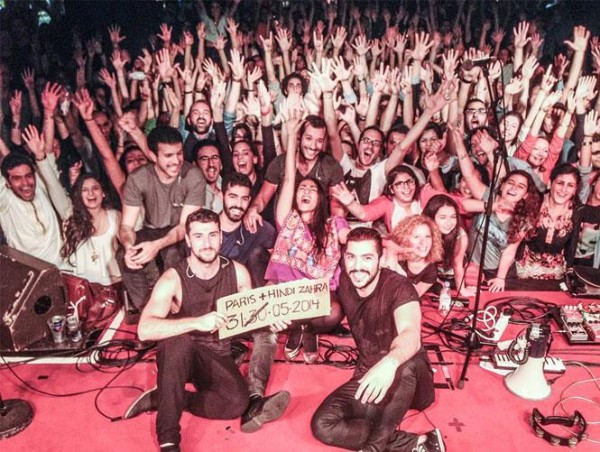
The Middle East and North Africa (MENA) is a contested space for queer folks. Persecution is common in Egypt, where gay men are continuously subjected to mass arrests, and queer Palestinians are often blackmailed. In contrast, Lebanon has led the LGBT*Q movement with a recent court ruling that homosexuality is not “unnatural or a crime. Celebrities like Hamed Sinno, the gay lead singer of Mashrou’ Leila, can even use music to address gender expression and gay love there. Research on the origins of queerness and homophobia in the region and why governments repress queer communities can help us understand such conflicting trends.
Contrary to beliefs that queerness is un-MENA, un-Islamic, or un-African, Abu Nawas (756-814) wrote uninhibited erotic poetry about men and, in the 18th and 19th centuries in Egypt, homosexual and homosocial relations were quite common. Lesbianism is documented in the 9th century throughout the region.
- Samar Habib. 2007. Female Homosexuality in the Middle East: History and Representations. New York: Routledge.
- Mervat Hatem. 1986. “The Politics of Sexuality and Gender in Segregated Patriarchal Systems: The Case of Eighteenth- and Nineteenth- Century Egypt,” Feminist Studies. 12(2):250-274
Contemporary state repression often involves torture, surveillance, and harassment of gays and lesbians by state actors. After the Arab Spring revolutions, social science sheds light on how such politically unstable governments attempt to maintain and enforce social stability and societal moral. This larger sense of a need for control could fuel queer community repression.
- Jennifer Earl. 2011. “Political Repression: Iron Fists, Velvet Gloves, and Diffuse Control,” Annual Review of Sociology 37:261-284.
- Mark Ungar. 2000. “State Violence and Lesbian, Gay, Bisexual and Transgender (lgbt) Rights,” New Political Science 22(1):61-75.
- Christian Davenport. 1995. “Multi-Dimensional Threat Perception and State Repression: An Inquiry, into Why States Apply Negative Sanctions.” American Journal of Political Science 39(3):683-713.
For more on sexuality in the MENA, see lectures from the ““Sexualities and Queer Imaginaries in the Middle East/North Africa’ conference at Brown University.

Comments 1
Miray Philips — January 9, 2016
Here is the link to the lectures on youtube: https://www.youtube.com/playlist?list=PLTiEffrOcz_4BzBarLJG9ocsOdPFu5Gre